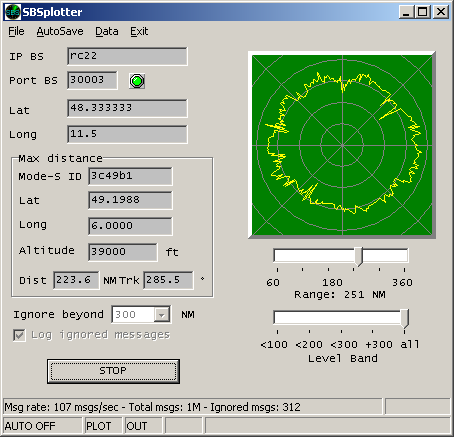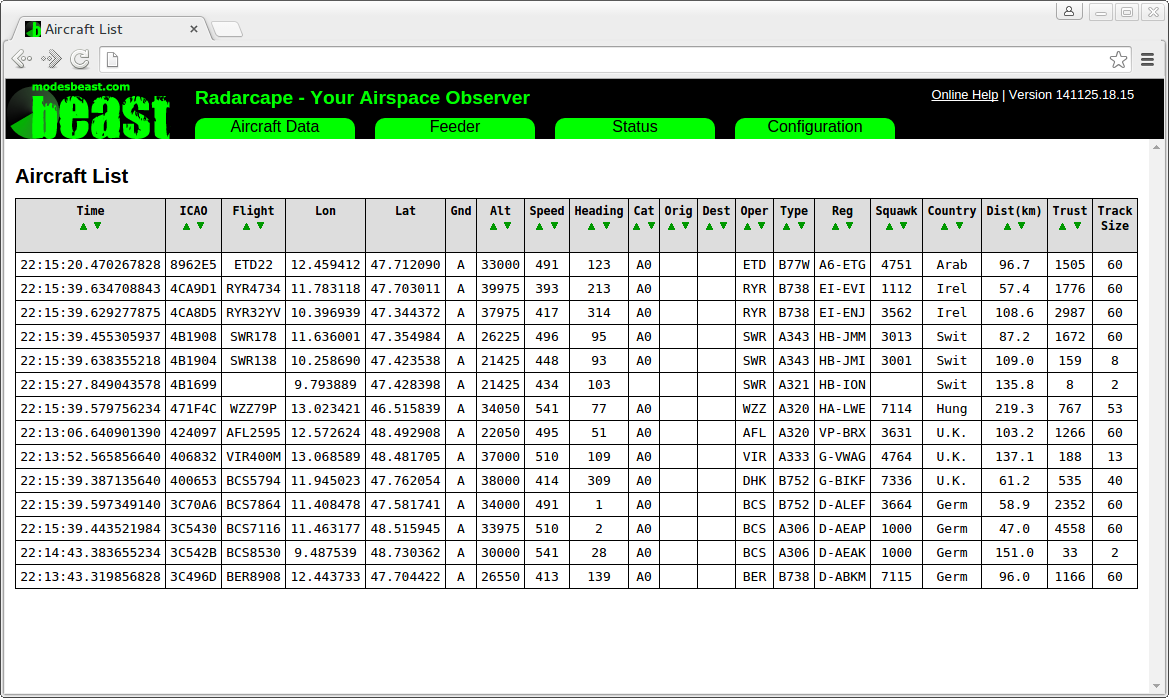Radarcape:Software Features: Difference between revisions
Jump to navigation
Jump to search
imported>Beastadmin No edit summary |
imported>Beastadmin No edit summary |
||
| Line 1: | Line 1: | ||
=Radarcape Applications= | |||
=Radarcape | |||
Revision as of 14:50, 3 October 2013
Radarcape Applications
Data Streaming to Network (TCP) / Prefiltering / Local CRC Check
The TCP streamed data will be prefiltered for CRC correctness of not directly CRC checkable frames. So the network load is lower than with the pure raw data stream. A port will be provided that streams out only DF-17 (and probably also DF-11) frames, so with least network load anyone else even behind a low speed network can have an overview of what's going around.
- TCP port 10002: This is a binary mirror of the data as it comes from the FPGA, DF-11, DF-17 and DF-18 are CRC-checked. Includes Mode-A/C data with respect to the setting in the FPGA (DIP switch).
- TCP port 10003: raw data with all Modes-S data formats CRC-prechecked (eleminiates transmission of the erroneous frames, reduces load on the transmission path). All data from the FPGA is disassembled into messages and verfied if correct. In case that, the frame is converted into the binary output format and transmitted over TCP. Includes Mode-A/C data with respect to the setting in the FPGA (DIP switch).
- TCP port 10004: pre-checked DF-11, DF-17 and DF-18 only: minimum load for the transmission path but contains most information. No Mode-A/C data.
- TCP port 10005: all raw data frames of just those aircraft that locally no location (latitude and longitude) is known. For special MLAT purposes. Includes Mode-A/C data with respect to the setting in the FPGA (DIP switch).
Port 30003 Server
Port 30003 style output can be provided standalone and without need of a PC application.
Web Based Aircraft Table
A list of received aircraft positions can be fetched via a build-in webserver.

